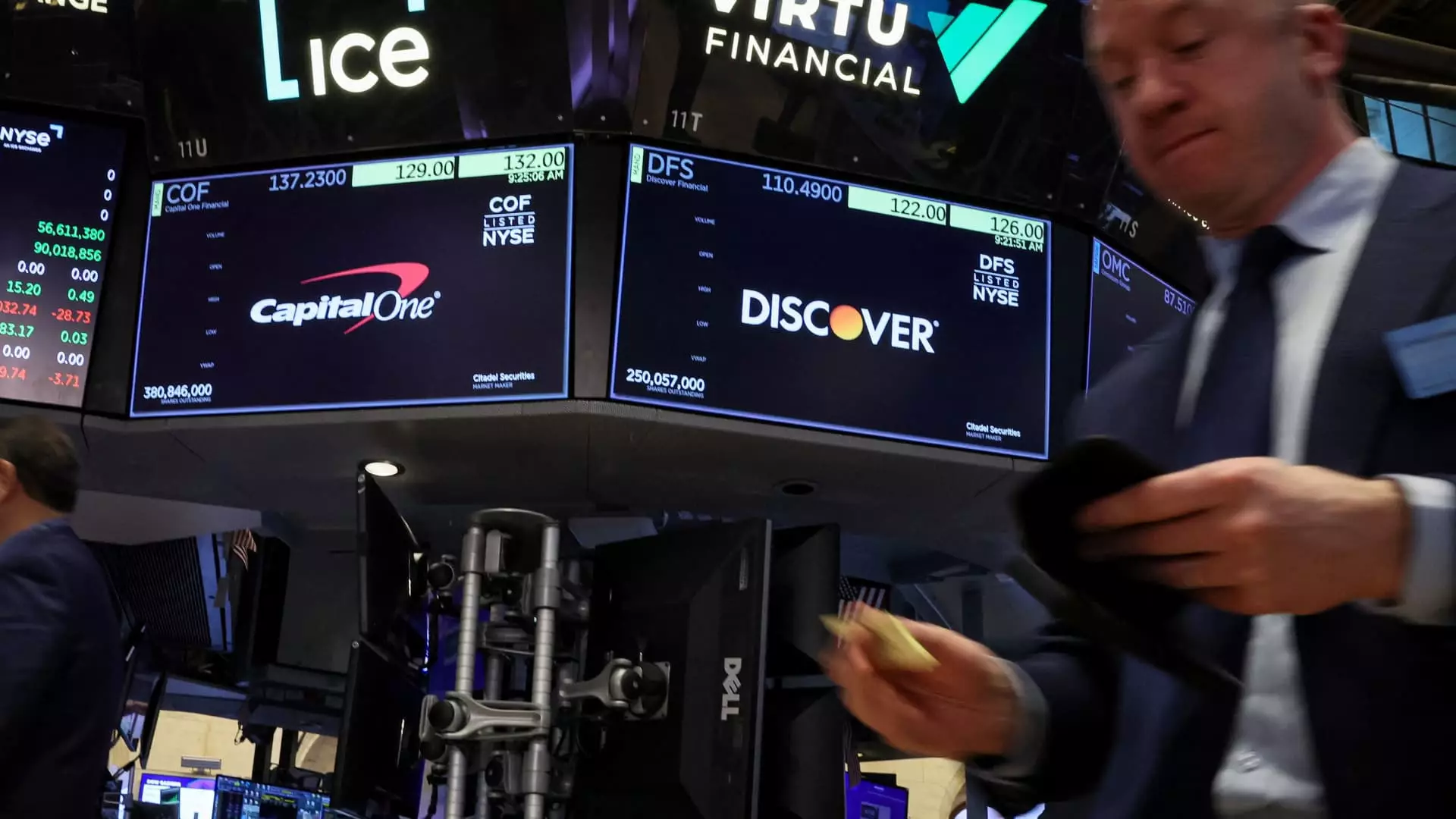The financial landscape is teeming with speculation, particularly as major mergers shape the future of large banking institutions. Recent analyses from Wall Street suggest that Capital One’s impending merger with Discover Financial Services could elevate its stock to astonishing heights—a projected $427 per share. Should this prediction materialize, it would represent an unprecedented 137% increase from Capital One’s recent closing prices. Investors should pay close attention, as such forecasts not only highlight potential financial gains but also the strategic shifts within the credit card landscape.
The Analyst Perspective
BTIG’s analysts have taken a bold stance by upgrading Capital One’s stock from a hold to a buy. They emphasize that the merger would unlock significant earnings potential through enhanced market share, particularly in the prime transactor credit card sector. This perspective encapsulates the inherent value of Discover’s payment network, which analysts describe as a “neglected gem.” Capital One’s advanced technological capabilities could breathe new life into this neglected asset, allowing for greater competition against established giants like Visa and Mastercard. This infusion of innovation is critical in a landscape that increasingly rewards tech-savvy financial solutions.
The analysts maintain a cautious yet optimistic outlook, noting that even without the merger, Capital One has a solid foundation with a projected standalone value of about $208 per share. This underscores the importance of prudent financial management, as the bank has amassed considerable excess capital since announcing the potential merger. Capital One could leverage this excess capital strategically, potentially repurchasing around $25 billion in stock over the next three years. Such maneuvers would greatly enhance earnings per share, positioning the bank favorably irrespective of the merger’s outcome.
The Merger Roadblocks
Yet, optimism around the merger is not without its challenges. Recent reports indicated the Justice Department’s reservations about the merger, particularly regarding how the combined entity might dominate the subprime credit card market. This confirms an uncomfortable reality—regulatory bodies are growing increasingly vigilant about market concentration. Capital One asserts that the merger aligns with legal standards and remains confident in its approval prospects. However, the reality is that such scrutiny can dampen investor enthusiasm and induce volatility in stock performance.
Further complicating the landscape is Capital One’s legal tussle with former President Donald Trump’s business entity. A lawsuit alleging violations of consumer protection laws—stemming from account closures following the Capitol riots—has cast a shadow on the bank’s reputation, complicating its merger narrative and potentially affecting investor sentiment. While Capital One defends itself by claiming political neutrality in its business practices, the underlying implications of such high-profile litigation can reverberate through public perception and stock performance.
The Competitive Edge
In a world characterized by robust competition, it’s evident that Capital One’s strategic decisions—such as tightening underwriting standards—have positioned it favorably against competitors like American Express and Ally Financial. The bank’s cautious approach to credit risk management demonstrates an understanding of evolving consumer behaviors and financial landscapes, suggesting that it can weather economic shifts with resilience. This adaptability is essential, particularly when consumer confidence wanes and financial conditions tighten.
Despite the potential risks associated with the merger, the prevailing arguments for its completion underscore the transformative possibilities for Capital One. Should the merger pass regulatory muster, the bank could significantly reduce transaction fees currently dependent on Visa and Mastercard’s systems. This operational efficiency would not only increase profitability but could also create a ripple effect—encouraging innovation and investment within Capital One’s expanding portfolio.
Investment Sentiment
As stock prices fluctuated following negative news surrounding the merger, Capital One’s shares displayed resilience, rebounding strongly from prior declines. The intrinsic value determined by analysts reflects an understanding that while external forces may influence the short-term, the long-term potential of the bank shines through. In a high-stakes game where major mergers could redefine market standards, the collective focus on Capital One hints at a larger narrative—investors aren’t just betting on numbers but on the strategic agility of a financial titan becoming more competitive in an ever-evolving landscape.
This sentiment reflects a broader trend in center-wing liberalism where individuals are increasingly aware of corporate behaviors and their ethical implications. The economic environment requires that not only should financial systems yield profits, they should also adhere to higher standards of corporate responsibility and social accountability. As Capital One navigates its challenges, it embodies a crucial conversation about how businesses can maintain integrity while pursuing growth.
The coming months will be pivotal in determining both the fate of this merger and how effectively Capital One can capitalize on its burgeoning potential in the credit card market. While volatility appears inevitable, the underlying fundamentals make a compelling case for those with a forward-looking investment strategy.

